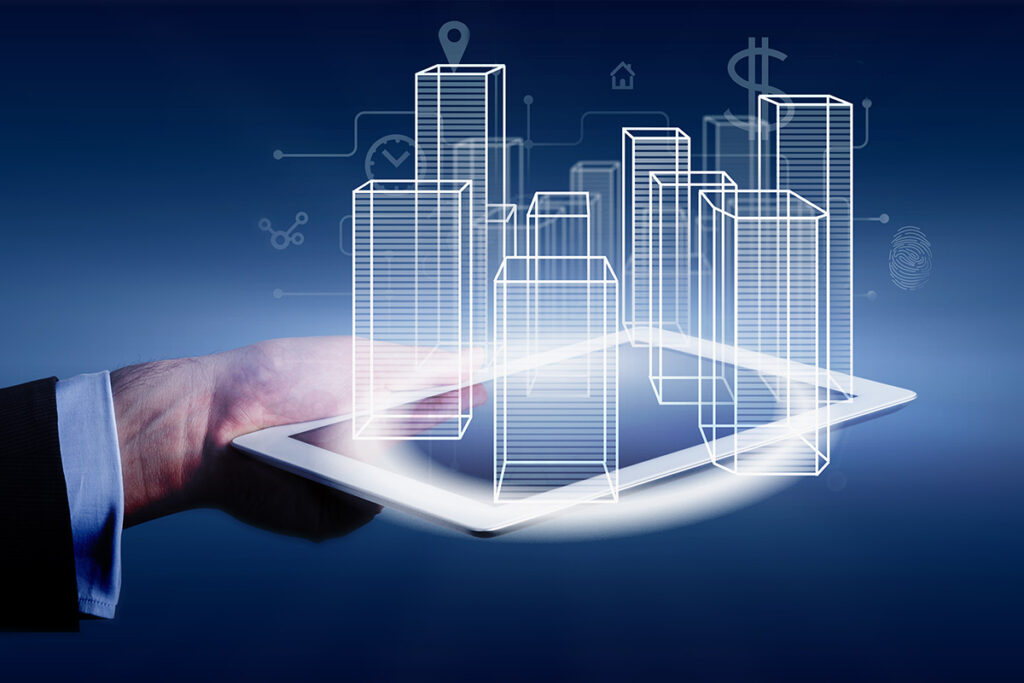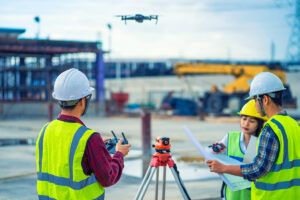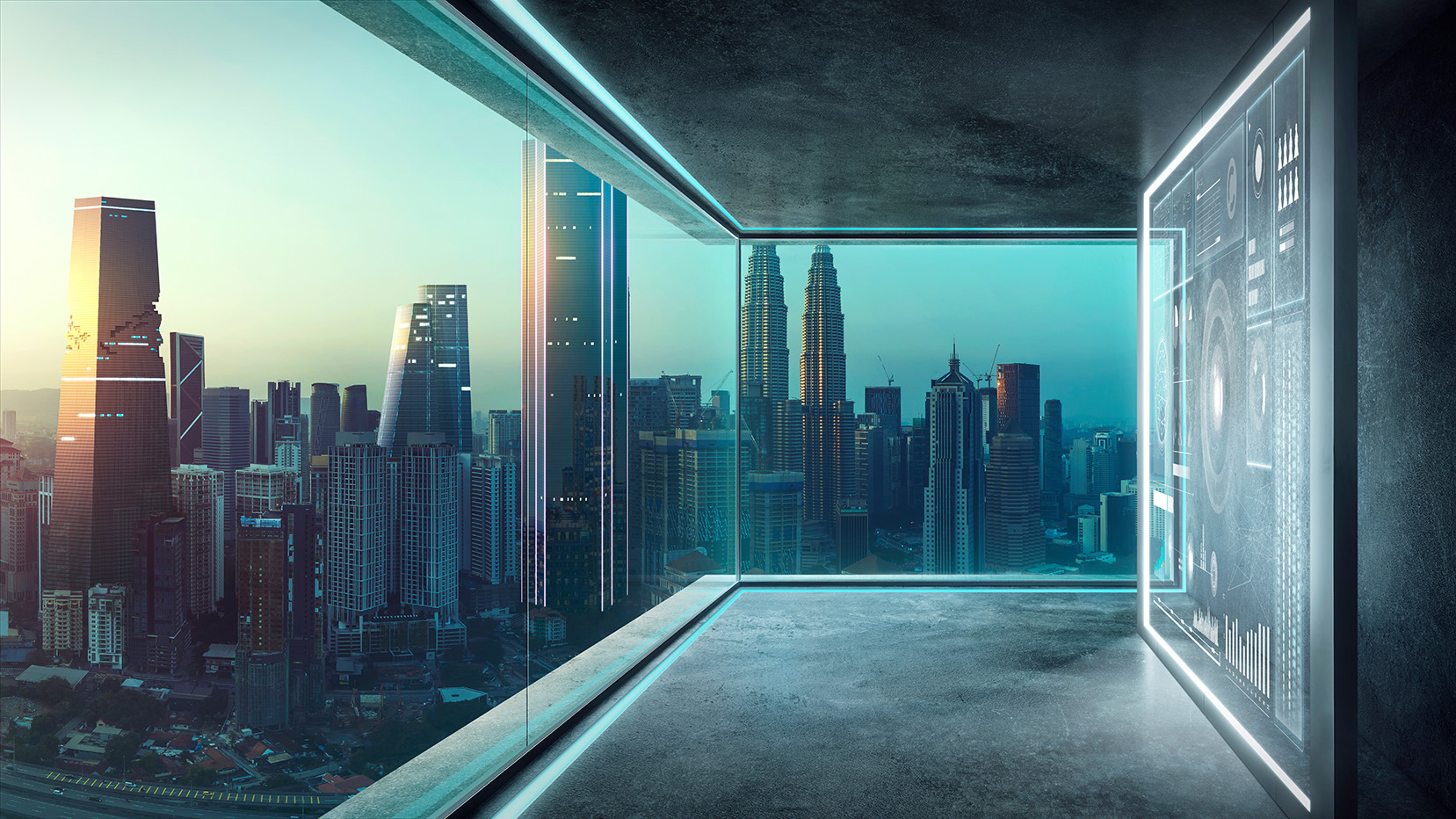The construction industry is undergoing rapid transformation, driven by technological advancements, environmental concerns, and economic factors. Let’s explore some key trends and the potential impact of each that are reshaping industrial and commercial construction:
Virtual Design and Visualization Technologies
These tools allow stakeholders to build structures in a virtual environment before breaking ground. Building Information Modeling (BIM) is one tool valued by construction firms that has evolved offering improved design processes and streamlined workflows.
Potential Impact:
- Reduced errors and rework – it’s estimated that rework of faulty or incorrect builds account for nearly 30% of construction industry costs, leading to significant cost savings.
- Improved stakeholder collaboration and client satisfaction.
- Faster project approvals due to clearer communication.
- Enhanced safety planning through virtual site walkthroughs.
Prefab and Modular Construction
Offsite construction is gaining traction, particularly in urban areas with space constraints. The global modular construction market was worth about $91 billion as of 2022, and it is expected to grow to $120.4 billion by 2027.
Overall, healthcare facilities, hotels/motels, multifamily, and colleges are the top industries expected to benefit the most from modular construction and prefabrication over the next three years.
Potential Impact:
- Shortened construction timelines
- Reduced on-site waste and environmental impact
- Improved quality control
- Enhanced productivity
- Safer, climate-controlled environments for workers
- Potential for more affordable housing solutions

Smart Cities
Smart cities have evolved and are integrated with Internet of Things (IoT) using high-tech solutions to connect people, data, and city elements.
Potential Impact:
- Optimized resource usage, leading to reduced energy consumption and costs
- Improved urban living conditions and citizen satisfaction
- Enhanced disaster preparedness and emergency response
- New economic opportunities in tech-integrated infrastructure
Green Building
Sustainability is no longer optional. Green building practices, focused on energy efficiency and eco-friendly materials, are becoming standard as regulations tighten and clients demand more environmentally responsible structures.
Potential Impact:
- Buildings are significant contributors to CO2 emissions, accounting for nearly 40% of global energy-related carbon output. Through green construction, energy consumption and greenhouse gas emissions are substantially reduced.
- Sustainable building practices include measures that minimize water use.
- Using non-toxic, sustainable materials enhances the living conditions within buildings, contributing to better health outcomes for occupants.
- Potential for higher property values and easier compliance with regulations
Living Building Materials
Innovative materials that can self-heal or even absorb CO2 are moving from research labs to real-world applications, promising more durable and sustainable structures. Cement is a key target as cement accounts for 8% of global CO2 emissions.
New products like self-replicating concrete and self-mending biocement are being developed. Biocement is grown using biological materials and the process absorbs CO2 instead of emitting it. Innovations like this enable manufacturers to grow building materials that self-replicate, making it much easier and more efficient to scale.
Potential Impact:
- Extended lifespan of structures, reducing maintenance costs
- Improved resilience to environmental stressors
- Potential for buildings to actively contribute to carbon sequestration
- New aesthetic possibilities in architectural design
Drone Technology
 Modern drones map extensive areas, generating valuable aerial heat maps and thermal images. The advancement in drone software provides real-time, actionable data, streamlining decision-making and enhancing the construction process. Here is an example of KBCm drone footage of a multifamily facility.
Modern drones map extensive areas, generating valuable aerial heat maps and thermal images. The advancement in drone software provides real-time, actionable data, streamlining decision-making and enhancing the construction process. Here is an example of KBCm drone footage of a multifamily facility.
Potential Impact:
- Manual inspections in hazardous areas are reduced, improving worker safety.
- Site surveying before work begins addresses potential issues early on and reduces the need for rework.
- Saves time and money by eliminating the need for physical site investigations.
- Studies show a 61% increase in measurement accuracy.
- Enhanced security surveillance on construction sites.
- Helps to create accurate records of construction progress.
3D Printing
Large-scale 3D printing is moving beyond prototypes, with entire buildings now being “printed.” This technology promises faster construction times and unique design possibilities.
Potential Impact:
- Ability to create complex geometries, enabling new architectural possibilities.
- Potential for rapid deployment of emergency housing or infrastructure.
- Reduced material waste in the construction process.
- Disruption of traditional supply chains and labor markets.
Robotics and Automation
From bricklaying robots to autonomous construction vehicles, automation is increasing on job sites completing tasks and providing valuable data.
Potential Impact:
- Improved productivity and efficiency on job sites.
- Potential job displacement for certain roles, but creation of new tech-focused positions.
- Enhanced worker safety by automating dangerous tasks.
- More consistent quality in repetitive construction tasks.
- Job site monitoring ensuring projects are completed on time and within budgets.

Virtual and Augmented Reality
Virtual (VR), augmented (AR), and mixed reality (MR) are changing how construction professionals interact with job sites.
Potential Impact:
- Clients and stakeholders can experience detailed views of projects without physically visiting the site with virtual walkthroughs.
- Teams can work together on designs and problem-solving, regardless of their physical location in real-time.
- Workers can practice complex or dangerous tasks in a safe, virtual environment.
- AR can overlay critical information onto real-world views, aiding in equipment maintenance and building management.
Labor Shortages
The industry continues to grapple with workforce challenges, driving increased adoption of technology and alternative construction methods to bridge the skills gap. In a recent survey, 89% of construction firms reported challenges in filling job vacancies, and 61% experienced project delays attributed to labor shortages.
According to Associated Builders and Contractors, “The industry will need to attract about 501,000 additional workers on top of the normal pace of hiring in 2024 to meet the demand for labor.”
Potential Impact:
- Increased wages and improved working conditions to attract workers.
- Greater emphasis on vocational training and apprenticeship programs.
- Accelerated adoption of automation and robotics.
- Potential for more diverse workforce as the industry seeks to broaden its talent pool.
Material Costs
Fluctuating material prices, partly due to global supply chain disruptions, are pushing contractors to seek innovative solutions and alternative materials to manage costs.
Potential Impact:
- Increased use of recycled and alternative materials
- More emphasis on lean construction practices to reduce waste
- Potential for localized material production to reduce transportation costs
- Greater price volatility in construction projects, necessitating more flexible contracts
These trends are interconnected, collectively pushing the construction industry towards a future that is more efficient, safe, sustainable, and technologically advanced. For instance, construction monitoring is emerging as a crucial trend in the industry, driven by the integration of IoT devices, drones, BIM, AR, and VR enhancing project oversight and efficiency.
As the industrial and commercial construction industry continues to evolve, knowledge and adaptability will be key for companies looking to stay competitive in this changing landscape.




